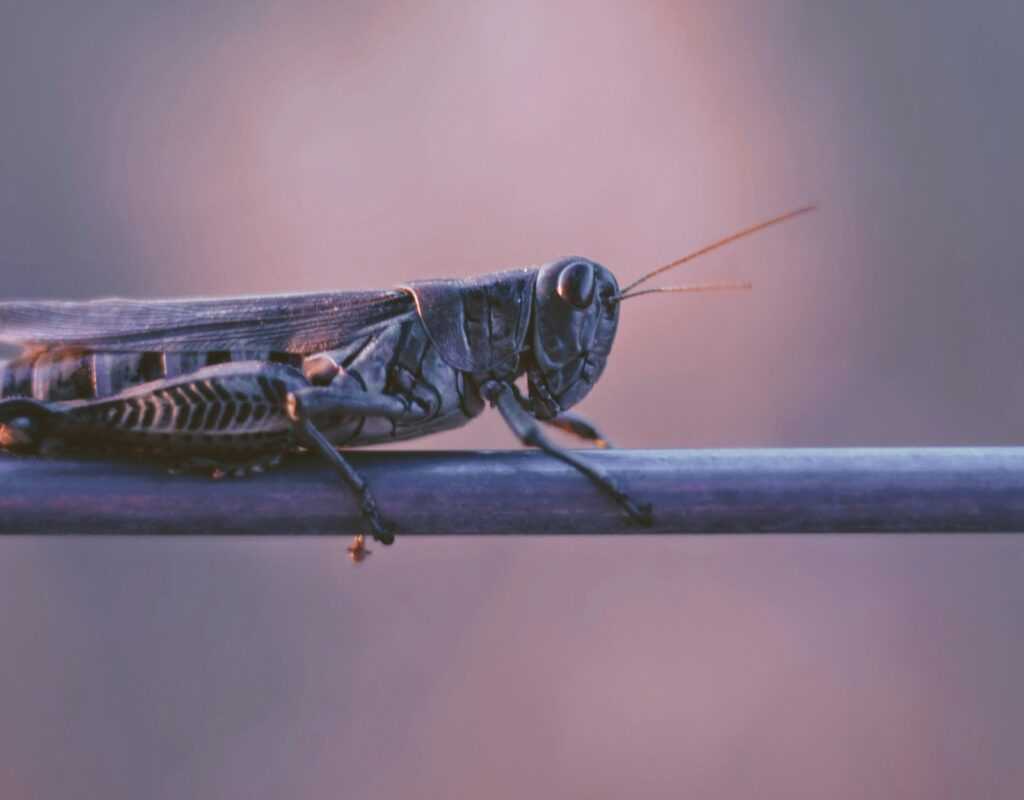A cricket infestation often begins quietly, with faint chirping at night or a few insects hiding behind furniture. Left unchecked, those few intruders can multiply quickly and spread throughout the property. Crickets feed on fabric, paper, and organic materials, which means they can damage clothing, wallpaper, and insulation long before they are seen.
Their presence can also attract secondary pests such as spiders or rodents that feed on them. Additionally, the constant chirping and unpleasant odor that large infestations produce can disturb sleep and affect indoor air quality.
Detecting a cricket infestation early helps prevent extensive damage and reduces the cost of treatment later. Timely identification also supports an integrated pest management approach, combining environmental controls with targeted treatments for best results.
This article explores how crickets behave, early warning signs, the habitats they prefer, and when to contact professionals. These practices align with modern pest management principles and the 5-layer protection plan, both essential for maintaining a pest-free environment.

Cricket Biology and Behavior
Understanding cricket habits is crucial for early detection. Crickets are nocturnal insects that seek warm, damp, and dark areas to hide during the day. They often inhabit basements, crawlspaces, and garages, but can also settle indoors when outdoor conditions become unfavorable.
Some species, such as house crickets and field crickets, are drawn to lights and warmth, while camel crickets prefer cool, moist areas. Crickets enter buildings through cracks, gaps under doors, utility openings, or vents. Once inside, they hide beneath appliances, behind baseboards, or inside wall voids.
Female crickets lay hundreds of eggs in soil or organic debris, allowing populations to grow quickly. Nymphs resemble smaller adults and are often mistaken for harmless insects. However, they can signal that a larger infestation is forming.
Crickets feed on organic matter, including paper, cardboard, fabrics, and even other insects. Because they are primarily active at night, their presence often goes unnoticed until the damage or noise becomes significant. Recognizing this behavior helps homeowners monitor areas most likely to harbor them before the situation worsens.
Early Warning Signs to Monitor
Crickets are small and elusive, but they leave behind clear indicators of their presence. Watching for these warning signs can help you act before an infestation grows.
- Persistent Chirping at Night
The most obvious sign is chirping sounds during the night. Males rub their wings together to attract females, creating the characteristic chirp. The louder and more frequent the noise, the larger the infestation is likely to be. - Damage to Fabrics and Paper
Crickets feed on soft materials, leaving small holes or irregular chew marks on fabrics, books, wallpaper, and cardboard boxes. Damaged upholstery or frayed carpet edges often point to hidden activity. - Droppings and Debris
Small dark droppings and tiny pieces of shed skin can accumulate near walls, baseboards, and corners. These residues are often mistaken for dust but signal regular cricket activity. - Unpleasant Odor
A musty or oily smell may develop in heavily infested areas due to the buildup of fecal matter and dead insects. - Sightings Around Light Sources
Crickets are attracted to light. Finding them near lamps, doorways, or windows after dark is a strong indicator that they have established nearby breeding zones.
Monitoring these signs regularly allows you to intervene before the infestation expands into walls and flooring.
Habitat Clues and Monitoring Strategies
Knowing where crickets hide and what attracts them is key to controlling their population. Focus on structural and environmental factors that make your property appealing to them.
- Moisture Sources
Crickets thrive in damp environments. Check crawlspaces, basements, bathrooms, and irrigation zones for leaks or condensation. - Landscaping and Exterior Conditions
Dense vegetation, mulch, or debris piles near walls provide ideal nesting spots. Applying integrated pest prevention reduces these harborage areas. - Gaps and Cracks
Examine siding, foundations, and doors for openings. Sealing these prevents crickets from entering during cooler months or after rainfall. - Stored Items
Boxes, firewood, and clutter near walls often provide hiding spaces. Store items off the ground and away from moisture sources.
For improved detection, consider using sticky traps in corners, acoustic sensors near walls, and occasional night inspections with flashlights. These steps support the principles of the 5-layer protection plan by combining inspection, monitoring, and structural defense against pest intrusion.
When to Escalate to Professional Intervention
Even if you catch early signs of a cricket infestation, professional assistance can ensure complete resolution. Crickets can breed quickly and hide in inaccessible areas that typical home treatments fail to reach.
If you notice multiple live crickets, extensive fabric damage, or recurring noises despite cleaning and sealing entry points, it is time to consult a pest control expert. Professionals use advanced inspection tools such as moisture meters, baiting systems, and precision applications that eliminate both adults and eggs.
They also assess environmental contributors like humidity and structural design to develop long-term solutions. A professional approach not only removes existing infestations but also prevents new ones from forming. Attempting to handle the problem alone often delays full eradication and may lead to recurring outbreaks.
Restore Peace and Silence to Your Home
Take control before a few noisy crickets turn into a full infestation. Early action prevents property damage and recurring issues. Contact EcoGen Pest Control to schedule an expert inspection and protect your home with tailored solutions designed for lasting peace of mind.



